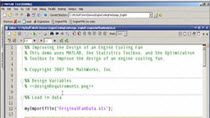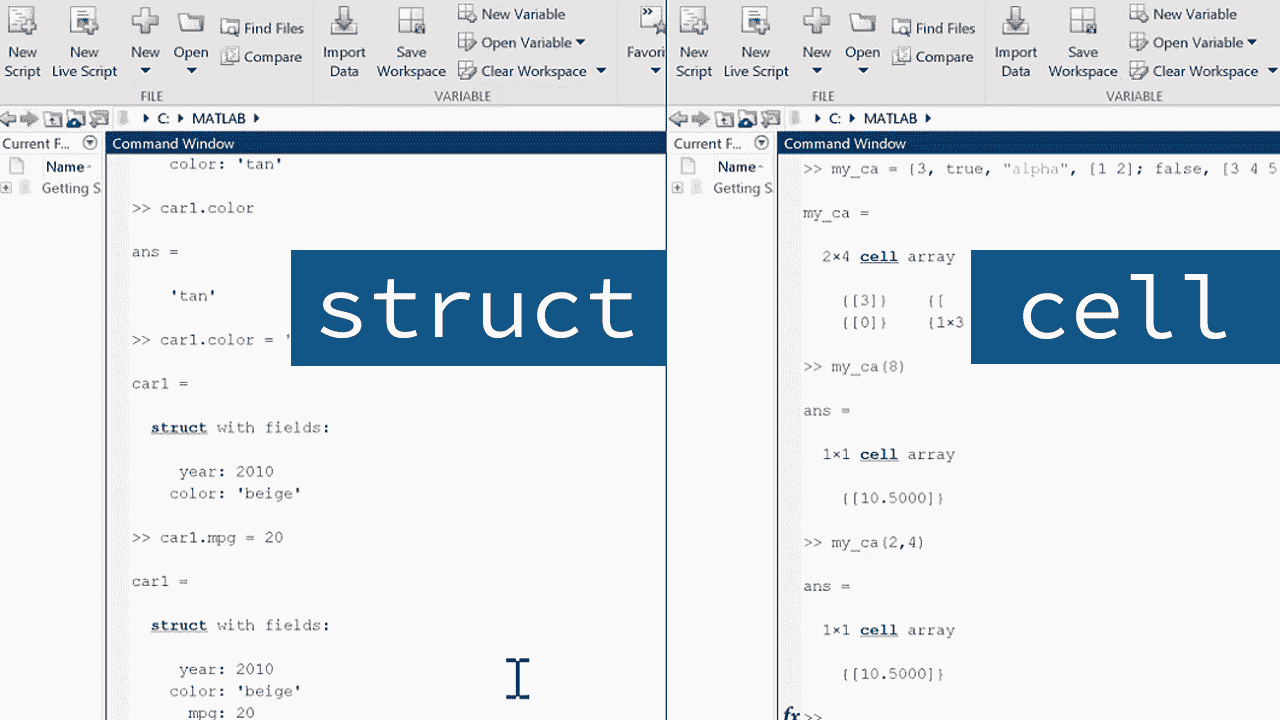Physical Broadcast Channel (PBCH) Decoding and 5G Cell Search
From the series: 5G Tutorial
This video discusses initial acquisition procedures starting with cell search. By acquiring the primary and secondary synchronization signals (PSS and SSS), you can see the timing and the knowledge of the physical cell identity. The video then discusses physical broadcast channel (PBCH) decoding, how the UE determines the synchronization signal block index with help of the associated demodulation reference signals (DMRS), and the role of the index in initial beamforming acquisition. The master information block, which is carried by the BCH, contains information about the system information block type 1 (SIB1), the next piece of information the UE looks for. The video then illustrates the random access procedure between the UE and the gNodeB, which enables UEs to get onto the network after receiving the SIB1.
Published: 25 Feb 2020
This is a new episode of our series 5G Explained. In this video, we discuss initial acquisition procedures, including cell search, decoding of the broadcast channel and the random access channel.
We will look at the phases of cell search and the role of the primary and secondary synchronization signals. Then, we will look at PBCH decoding to retrieve the master information block and how this procedure supports beam sweeping. Recovering the SSB time index is a crucial step in decoding the MIB. We will discuss the next piece of information a UE accesses after the MIB: the system information block Type 1 or SIB1.
Finally, we will look at the random access channel and procedure.
The synchronization signal block provides the UE with the ability to perform frame and symbol synchronization, which means the UE can discover the presence of a downlink 5G signal and start making sense of it.
After presence and timing have been established, the UE decodes the broadcast channel and reads the content of the master information block. A side piece of information that can be gathered is the SSB index, which helps determine a suitable beam for communication between the gNodeB and UE.
I will use illustrations from the NR Synchronization Procedures example in MathWorks 5G Toolbox to explain this process in detail.
As we saw in the episode of this 5G Explained series about the synchronization signal block, there are three possible primary synchronization sequences. The UE typically runs three correlators in parallel to detect one of those three possible sequences. Once a peak is detected, two pieces of information have been gained:
· Which PSS is being transmitted
· The timing of the SSB (Note that, at this point, the UE cannot tell which one of the SSB occurrences it has detected. This will come later.)
Here we can see that the UE has been able to detect all eight SSBs that were sent, although the second one is the one with the highest SNR. It will be selected for the rest of the procedure. Also, the PSS corresponding to index 0, in blue, is clearly recognized as the one transmitted in this cell. The other two, in orange and red, do not show any peak.
There are 336 possible secondary synchronization sequences but, at this point, the timing of the SSS is known. So, those correlations must be run only once. This stage determines which SSS was sent. The main piece of information gathered at the end of this stage is the physical cell ID, which is 3 times the SSS plus the PSS, a value between 0 and 1007. This step shows a very clear peak for sequence number 34. As a result, the physical cell ID in this cell is 3 times 34 plus 0, or 102.
The MATLAB code shows the simple process to determine the SSS. There is a loop that tries out all 336 possibilities and identifies the SSS with maximum correlation.
Each SSB comes with a realization of the physical broadcast channel and associated DMRS. The knowledge of cell ID is important to demodulate the BCH, as it enables the UE to generate the right DMRS for channel estimation. Once the BCH has been demodulated, the master information block and the SSB index are known. The next few slides explain the different steps for BCH demodulation
Each occurrence of the PBCH has a different DMRS, which depends on the SSB block index. The UE receiver hence tries out all four or eight possible versions of the DMRS and determines which one was sent for a particular SSB received.
On the right, the MATLAB code shows how to set up an SSB configuration.
In doing so, the UE determines the SSB index if there are up to eight possible occurrences. As you may remember from the episode about the synchronization signal block, for a carrier frequency under 7.25GHz or FR1, there can be up to eight occurrences, while that number is 64 for FR2 or mmW transmission. This means that another piece of information is needed to uniquely determine the SSB index for FR2 transmission.
As you may remember from the video of this 5G Explained series about the synchronization signal block, for FR2, the MIB carries three bits for time index. Those three bits along with the knowledge of which DMRS was used, let the UE determine one of 64 possible SSB indexes.
Here, we see a more detailed view of the procedure thus far. DMRS search leads to channel estimation and noise estimation, along with the SSB index or three bits thereof depending on the carrier frequency. The SSB resource elements are equalized and decoded, yielding the master information block. You can find the complete MATLAB code for this procedure as part of MathWorks 5G Toolbox.
Although the standard doesn’t mandate it explicitly, it is widely expected that each SSB occurrence will be beamformed with a different pattern. This enables the gNodeB to scan the space and target the energy in successive directions. Remember that, with mmW frequencies, beams become narrower, but the 5G standard specifies up to 64 possible occurrences instead of 8. This means that it is possible to use a high directivity antenna precoder to extend PBCH coverage.
Here, a few blocks are shown, each targeting a few degrees in space. The code on the right shows how to generate those beamforming vectors with MathWorks Phased Array System Toolbox.
Let us have a more concrete look at the process of BCH decoding and beam search with an example built with MathWorks 5G Toolbox.
We artificially pause the simulation after each SSB transmission, as it otherwise would be too fast to comment it live.
You can see the gNodeB with an array of transmit antenna. It transmits the first occurrence of SSB with a beam towards the sides of the space in front of it. The UE is located at around 20 degrees off the horizontal, but we assume there is no direct line of sight. The only path between the gNodeB and the UE is that one bounce off the wall shown in blue.
The UE receives this first transmission with low energy. The second transmission leads to a similar result and correlation amplitude. And so do the following ones, until the seventh transmission, where the main beam covers the location of the reflection. In this case, the received energy is much higher and, once all transmissions are complete, the UE can clearly identify the SSB with the most suitable beamforming.
As a side note, we will talk about RACH in a few slides, but it is worth noting at this point that, if the eNodeB associates RACH occasions, or transmission time opportunities, with a particular SSB index, it can then expect RACH that are received at a particular time instant to be coming from a UE that picked that SSB index as the strongest. As the gNodeB knows which beamforming was used for that particular SSB index, it can perform receive beamforming using the same pattern at that given time instant to maximize the probability of receiving the RACH. This can be seen as the initial step in establishing beamforming between the gNodeB and the UE.
The next piece of information the UE looks for is the system information block 1 or SIB1. As we saw in the episode about the synchronization signal block, the master information block includes all elements needed to locate and decode the SIB1. Note that the SIB1 is carried by the DL-SCH, which is the same channel that carries data packets.
Once the UE has decoded the SIB1, it has all the information it needs to request access to the network via the random access procedure.
There are two possible lengths for the RACH preamble: a long preamble at 839 and a short one at 139. The long preamble is useful in large cells, as the timing uncertainty is larger because of longer propagation delays. Therefore, the long preamble is limited to sub-6GHz 5G transmissions.
The short preamble applies to all possible 5G frequencies.
We are not going into all the detail of the different RACH formats here, but it is good to be aware that different formats exist, which vary in number of OFDM symbols, cyclic prefix lengths and guard times. The information about which format to use is carried by the SIB1.
We want to conclude this section about acquisition procedures with a simplified overview of the random access procedure.
The UE makes its presence known to the network by sending a RACH. The gNodeB replies by sending a RACH access response carried by the PDSCH. It contains:
· A timing advance for the UE to adjust its timing
· A temporary RNTI or Radio Network Temporary Identifier
· A scheduling grant for the UE to acknowledge the access response
The UE is able to discover and decode the access response because the response uses a reserved RNTI called the RA-RNTI. Refer to the episode about downlink control information for a discussion about the use of RNTIs to identify control information.
At this point, there could be several UEs that sent the same request at the same time, and the gNodeB can’t tell which UE or UEs it is talking to.
So, the response to the RACH access response is a contention resolution message, which is sent via the PUSCH or data-carrying channel, using the scheduling grant provided in the access response.
In the final step, the gNodeB acknowledges the contention resolution message by sending back the device identity in a message encrypted with the temporary RNTI.
The UE that recognizes its device identity knows it has been acknowledged by the gNodeB and uses the temporary RNTI from now on.
This concludes this episode of the 5G Explained series on initial acquisition procedures.





